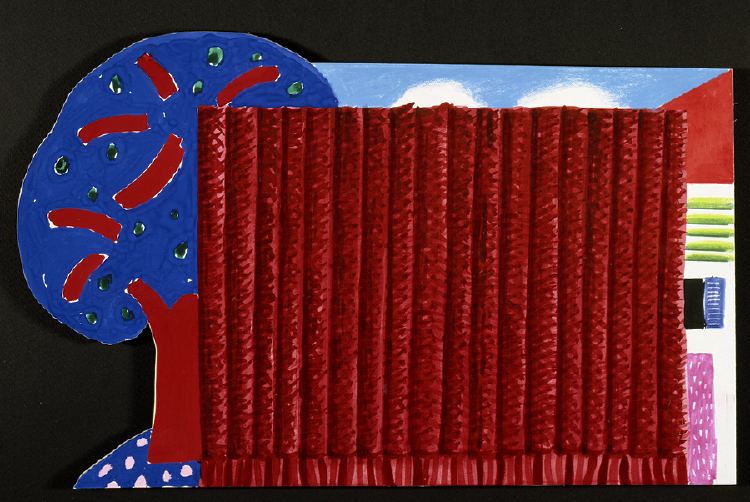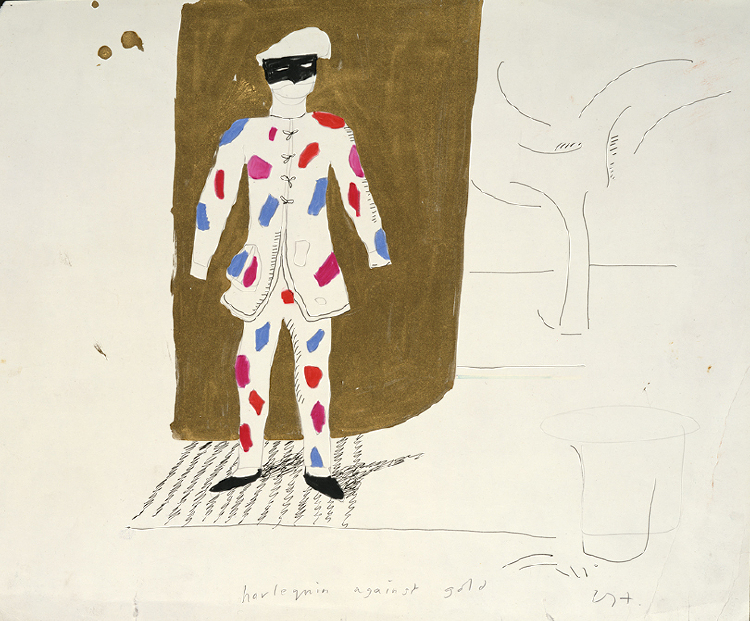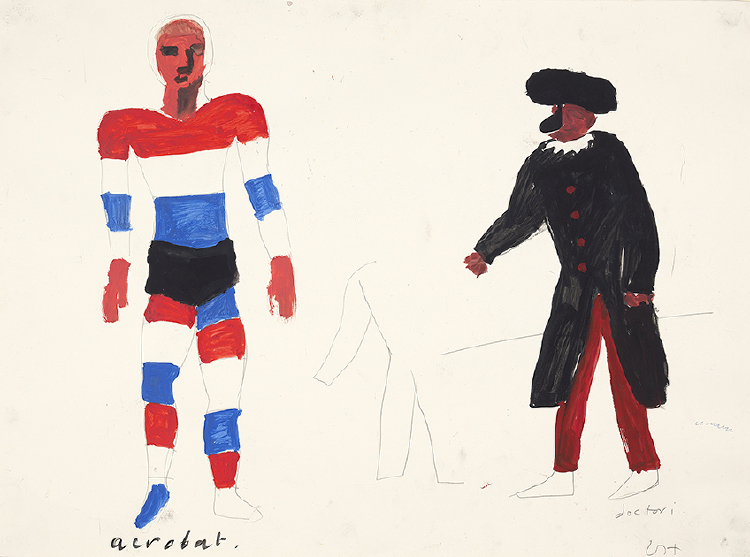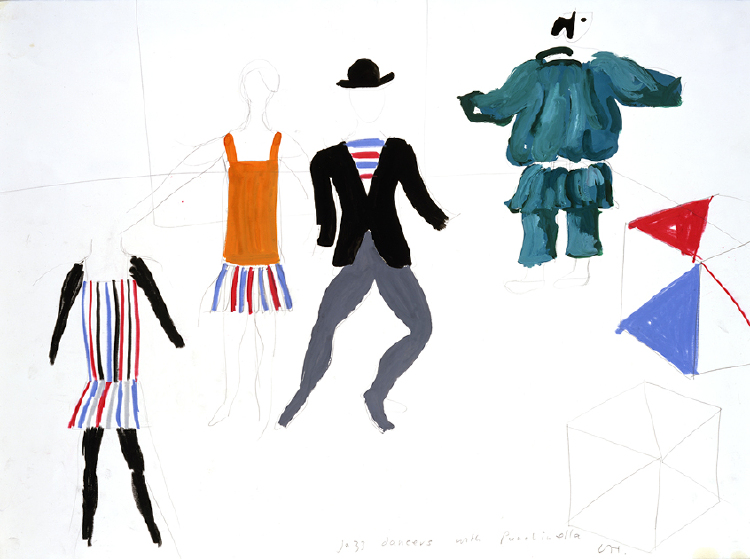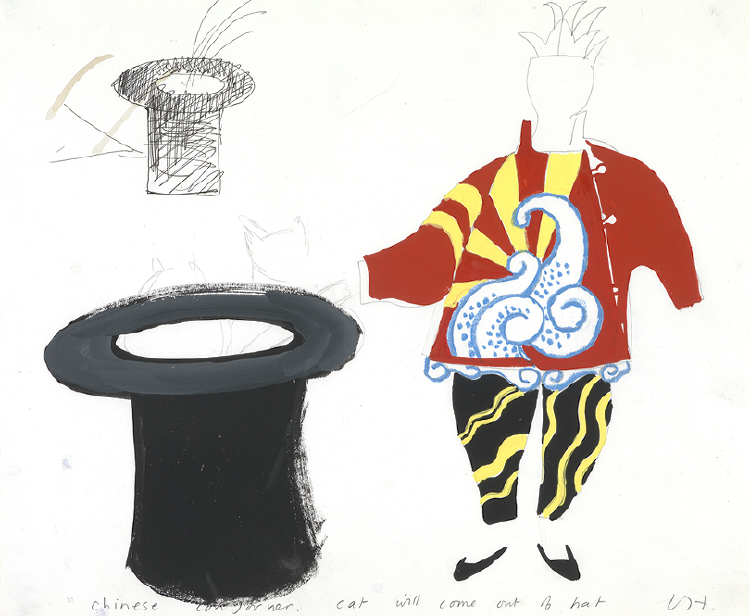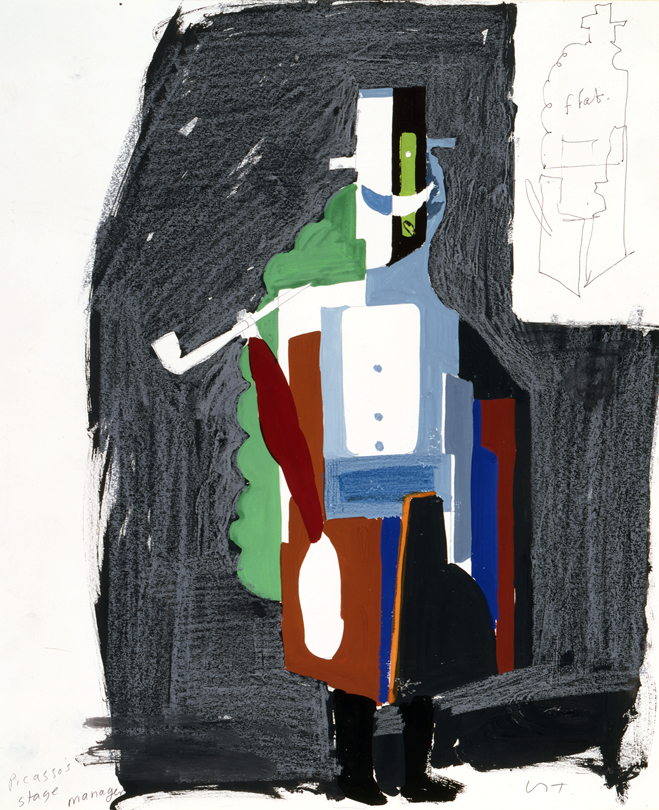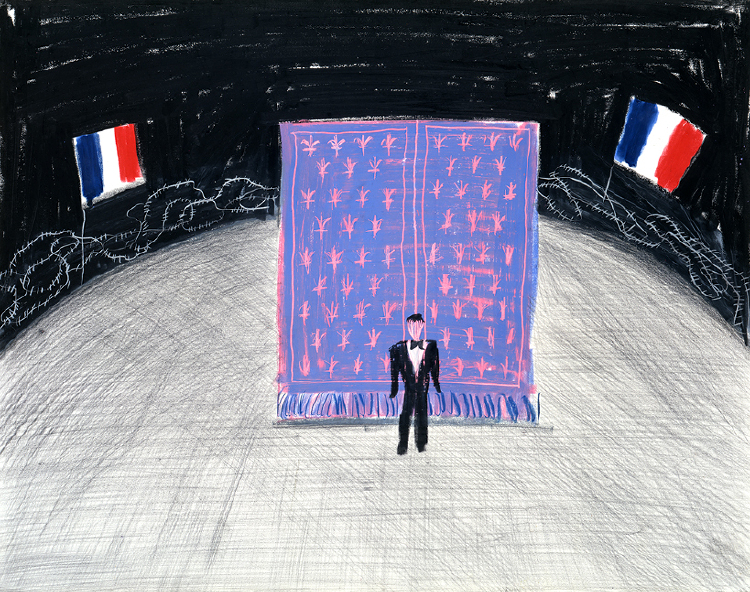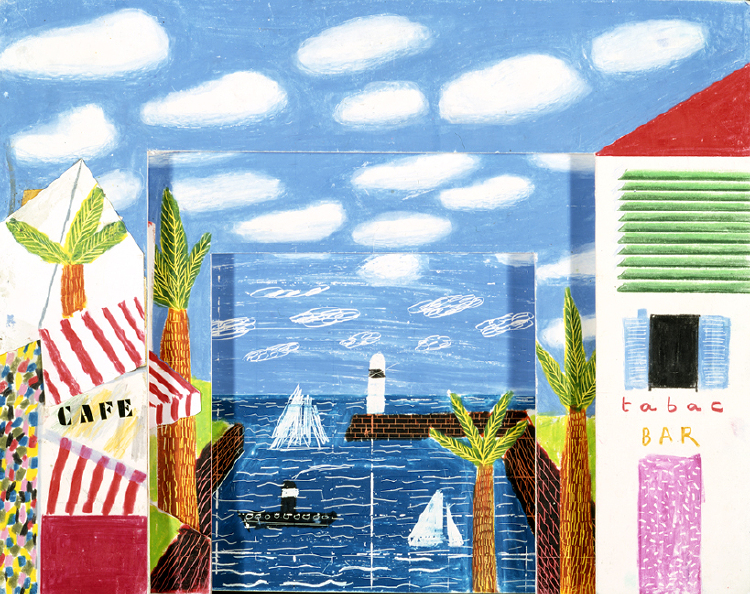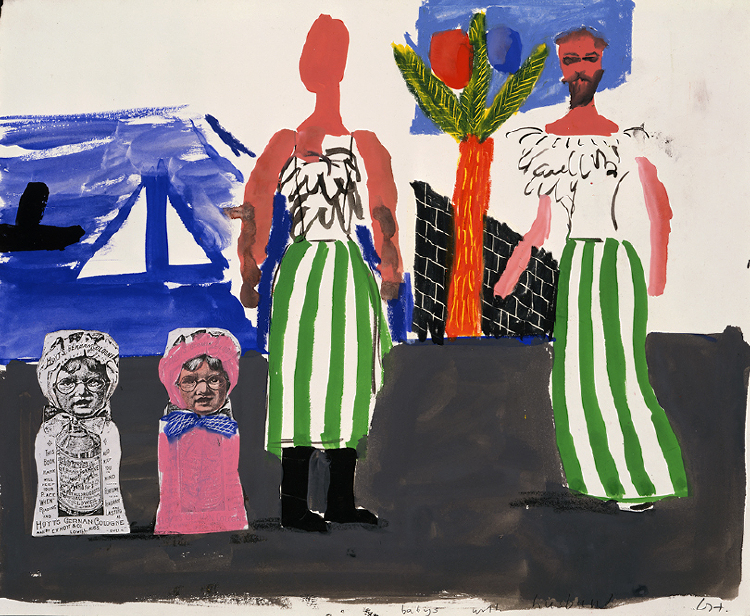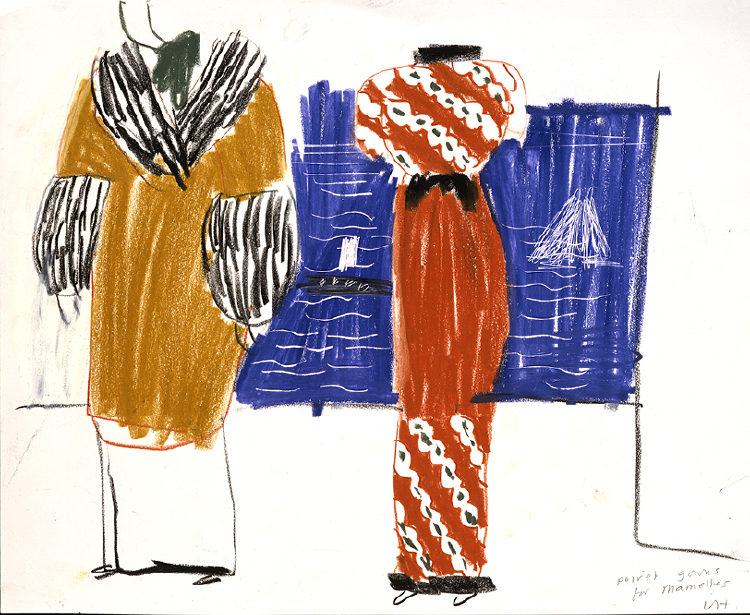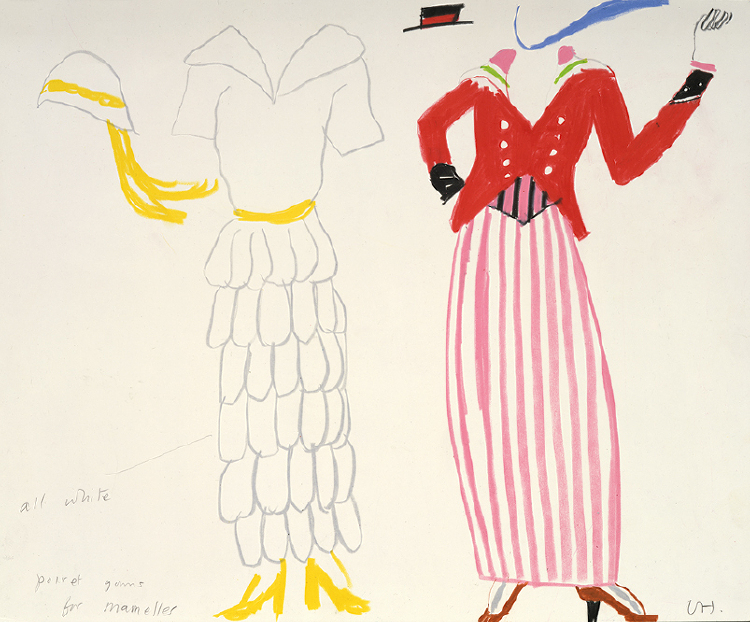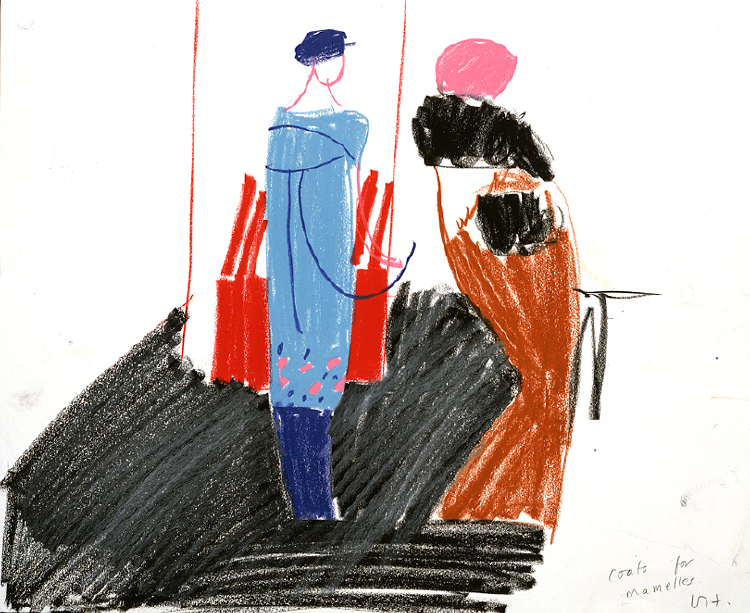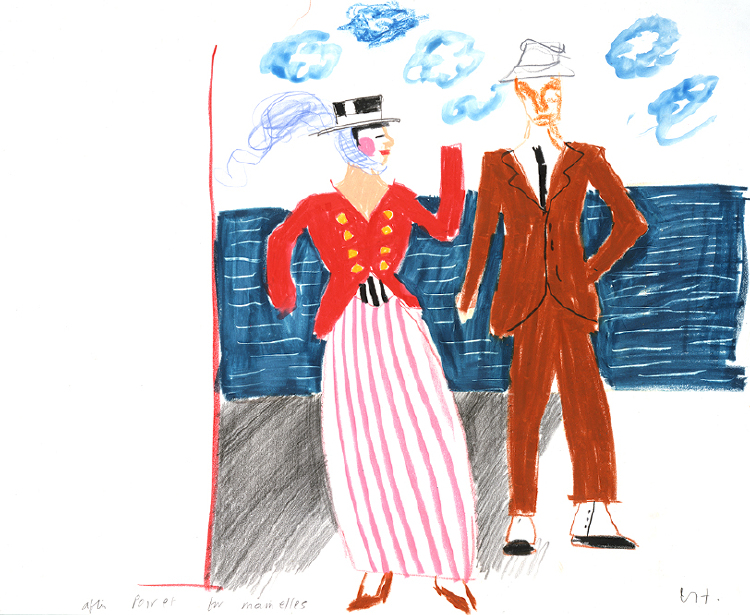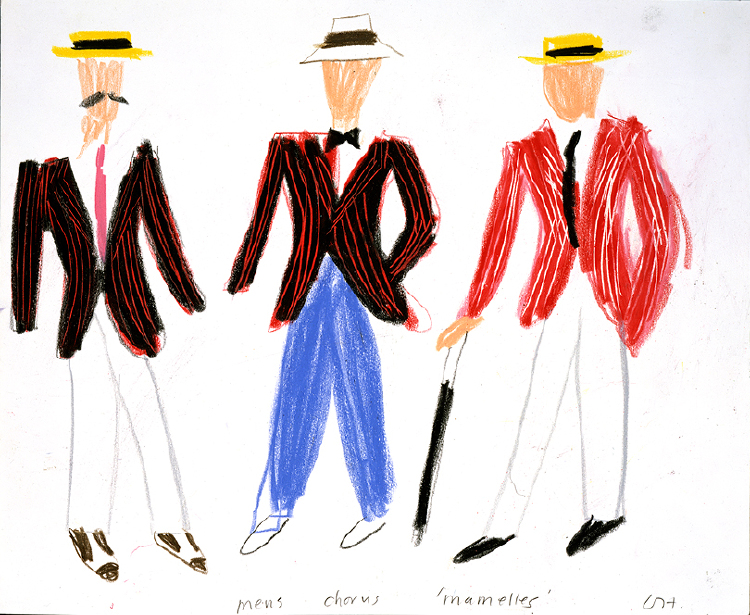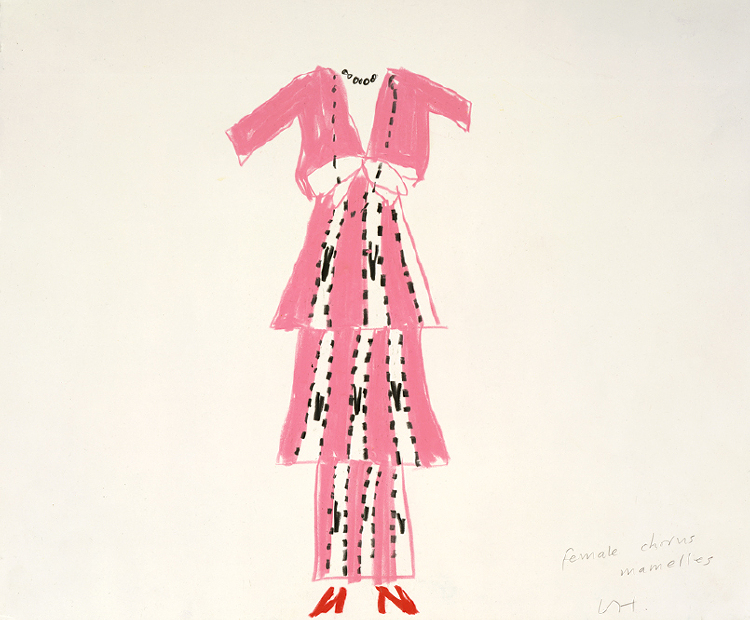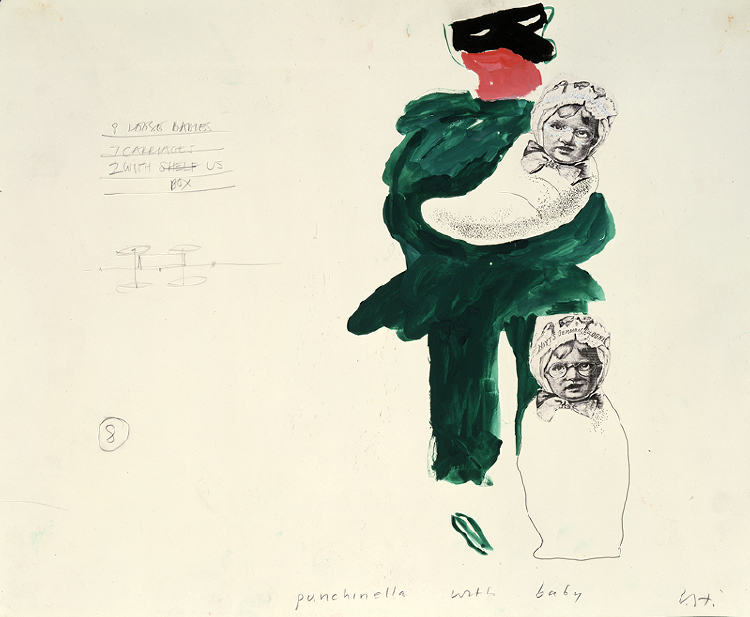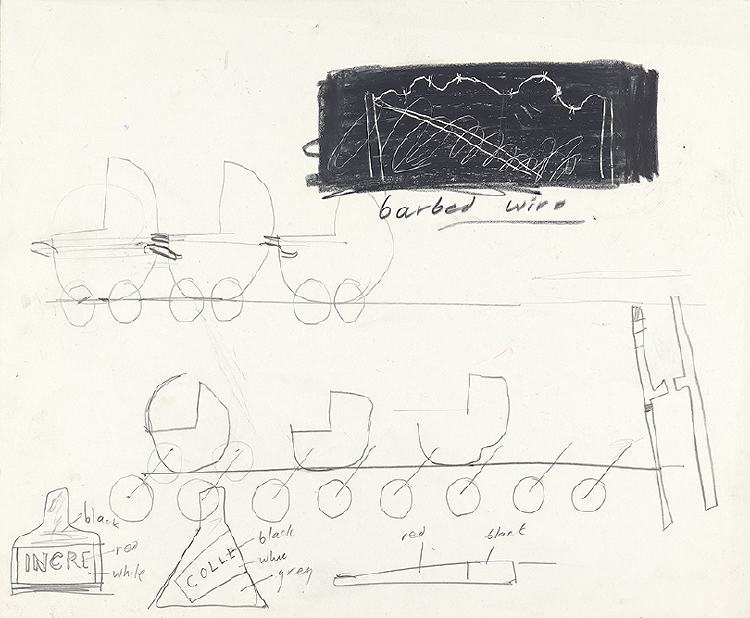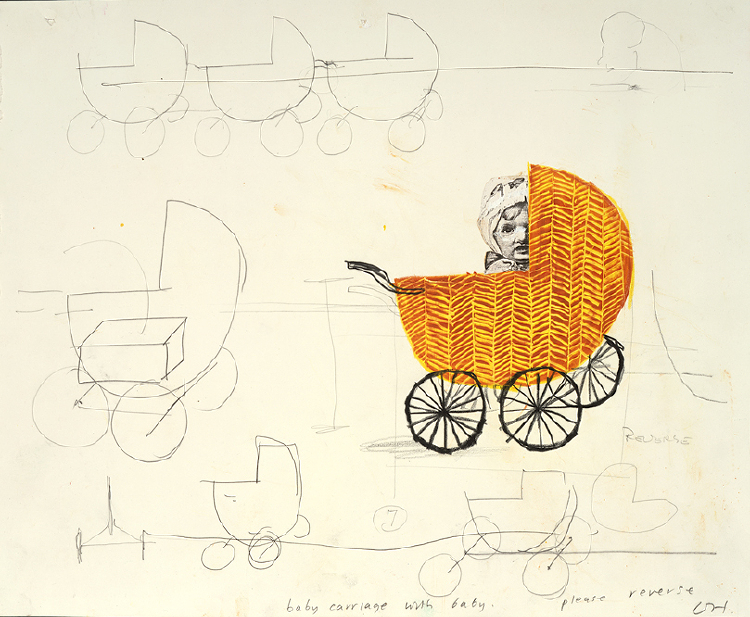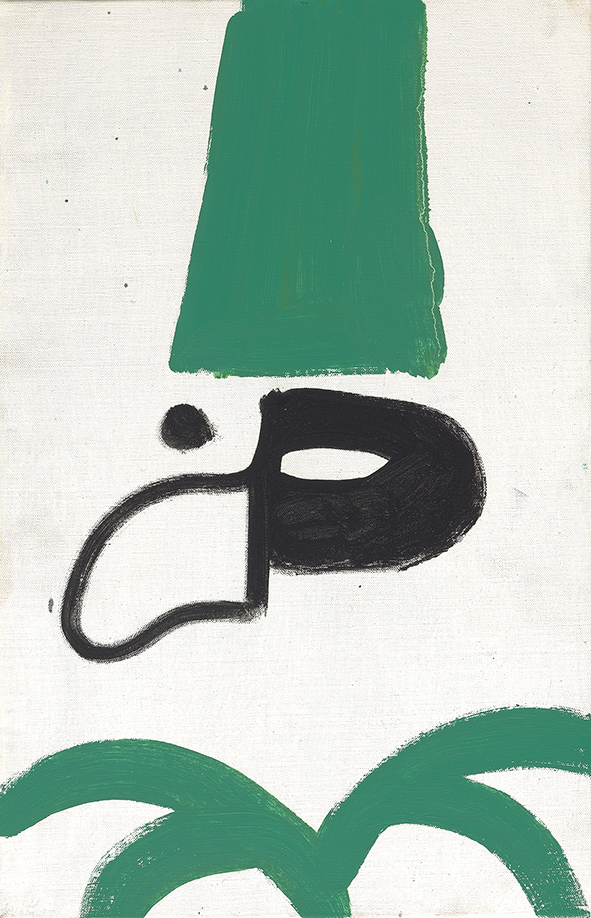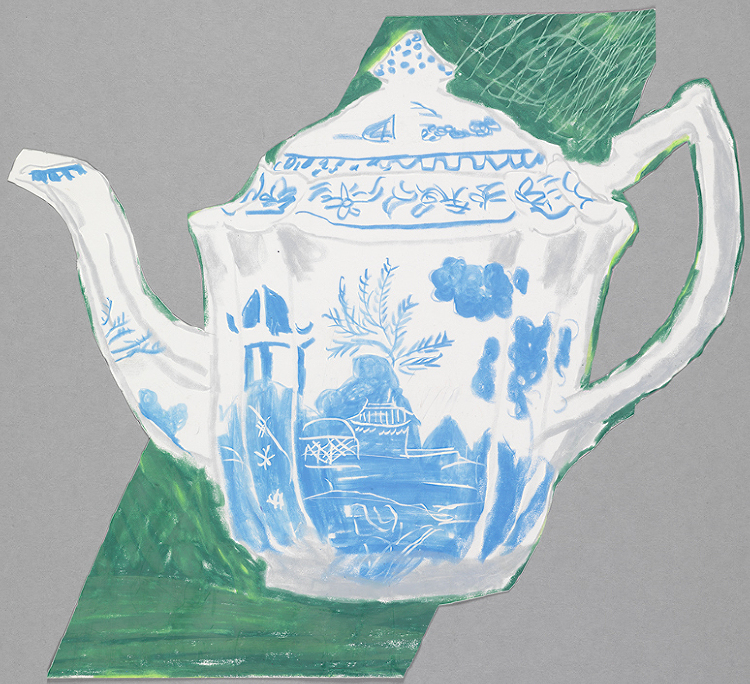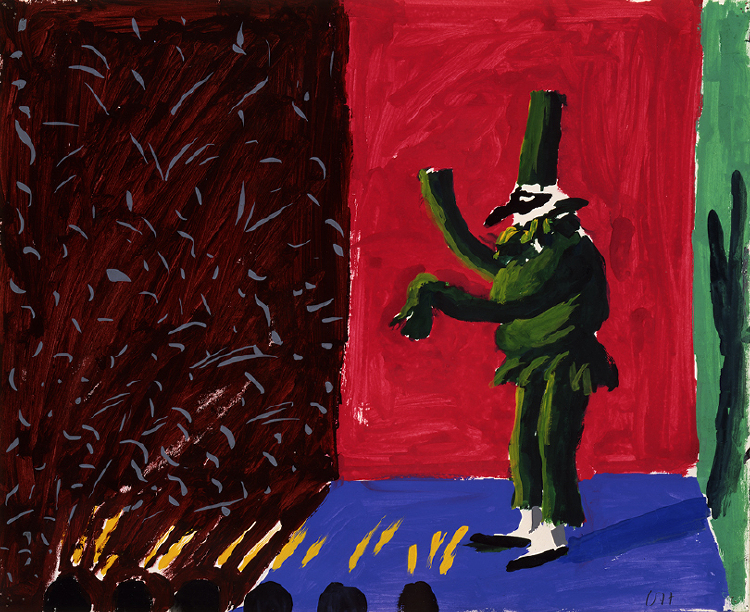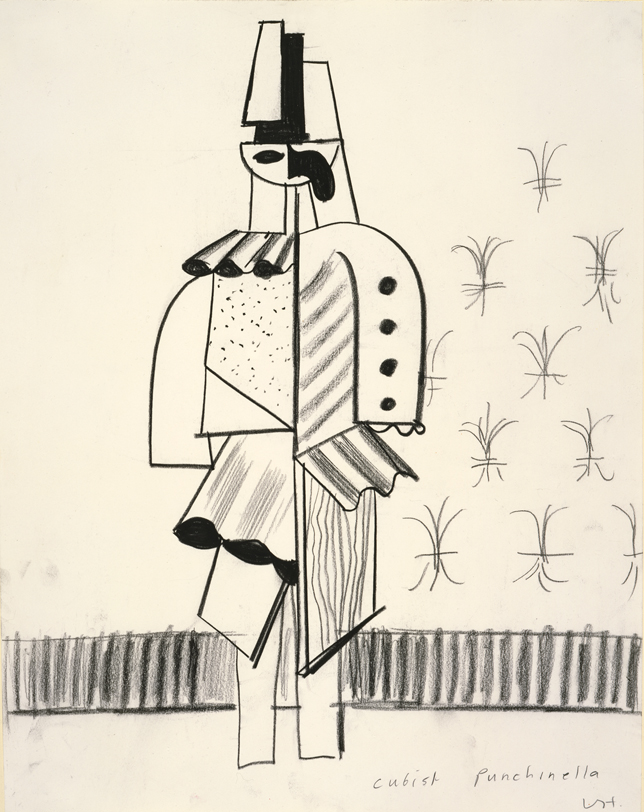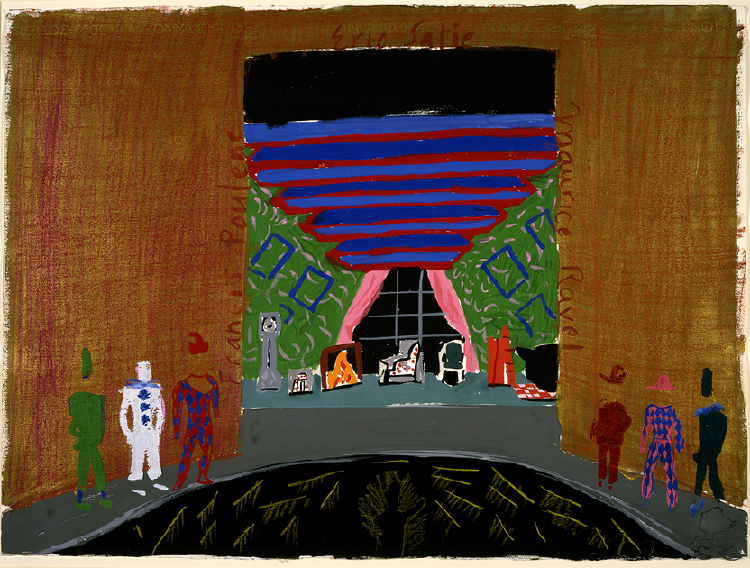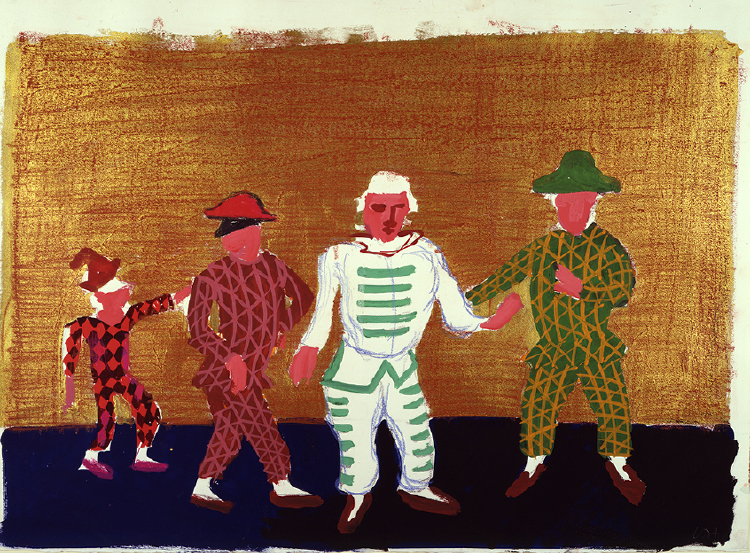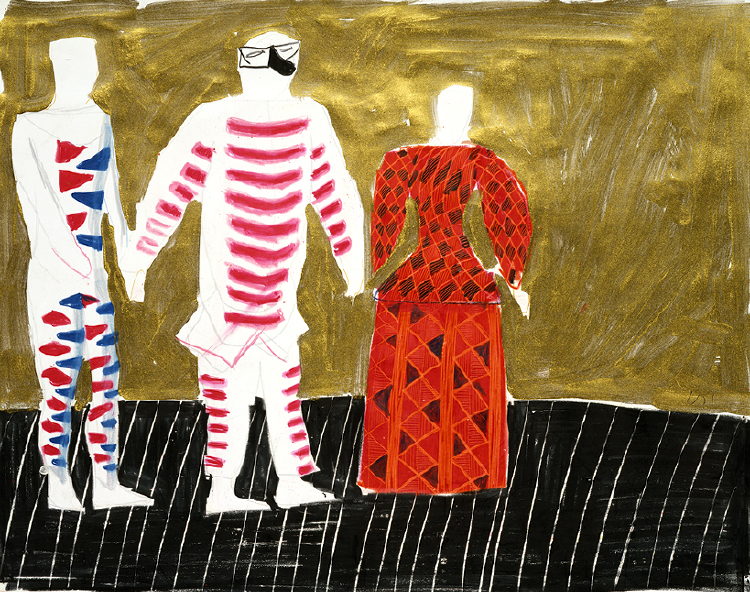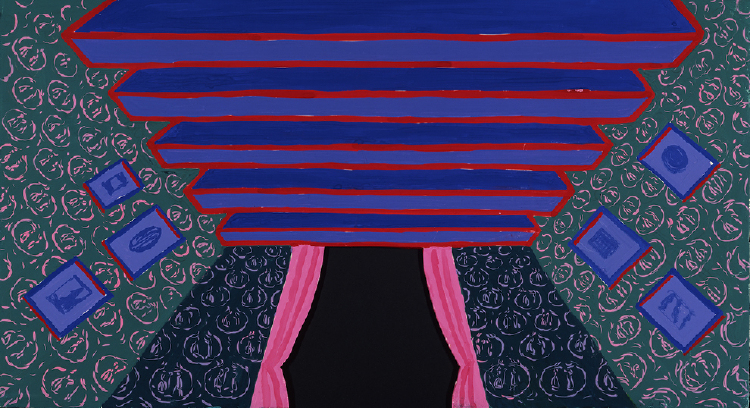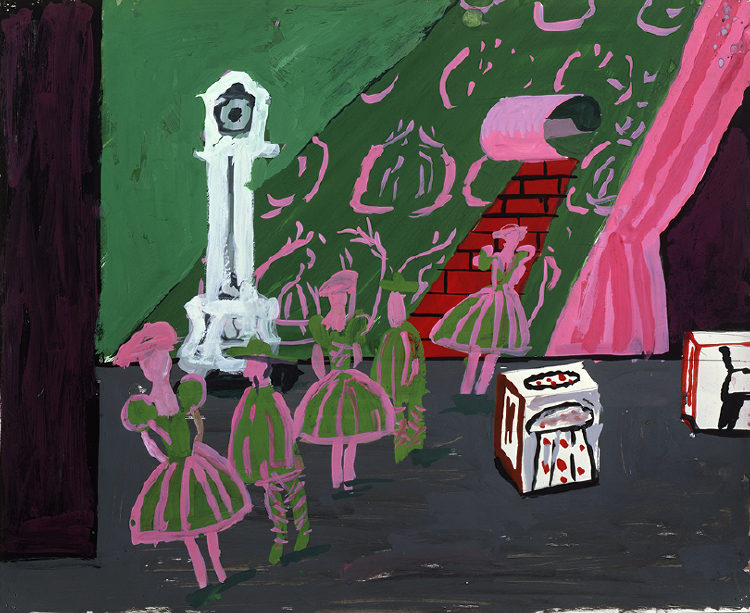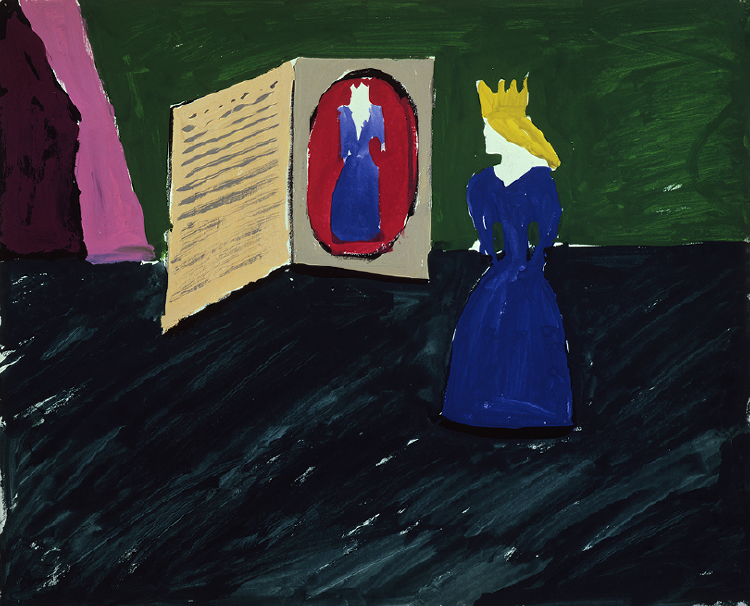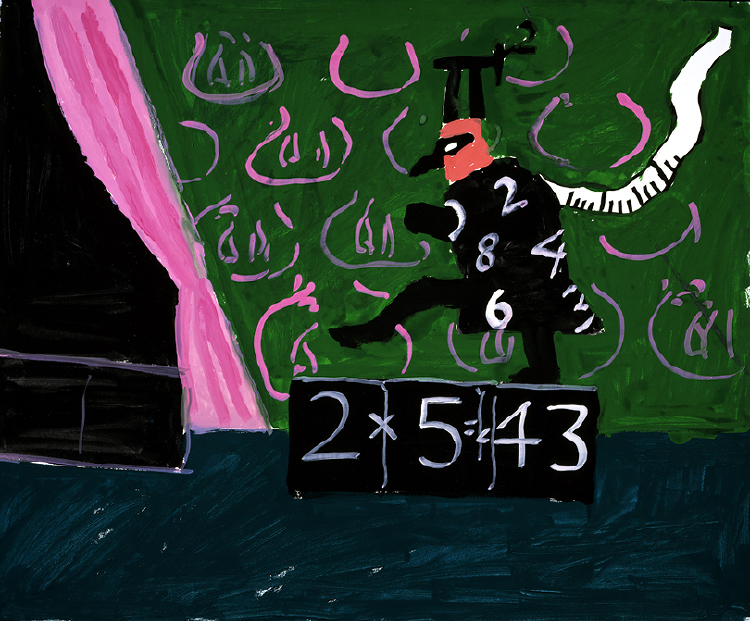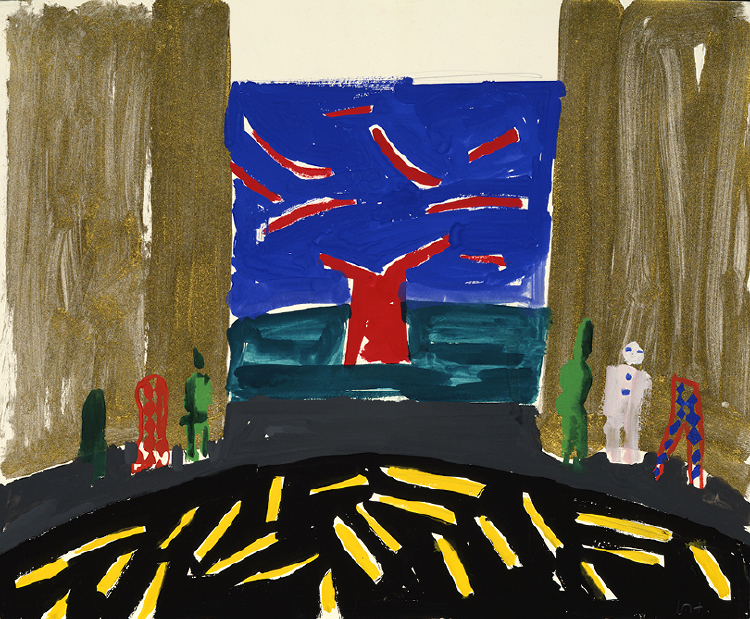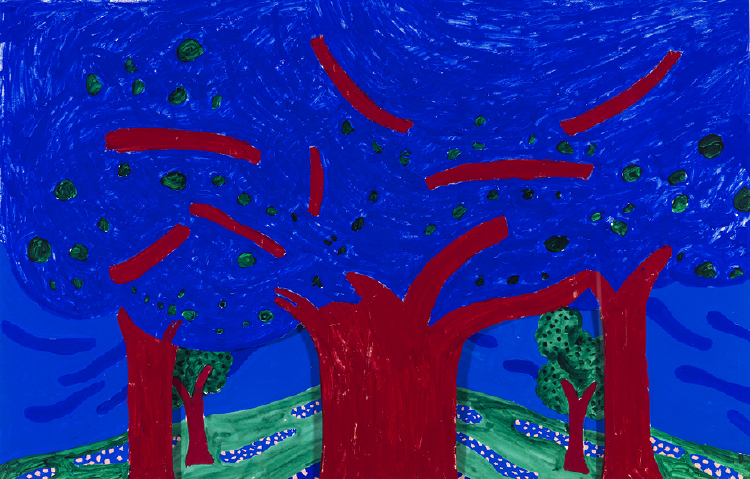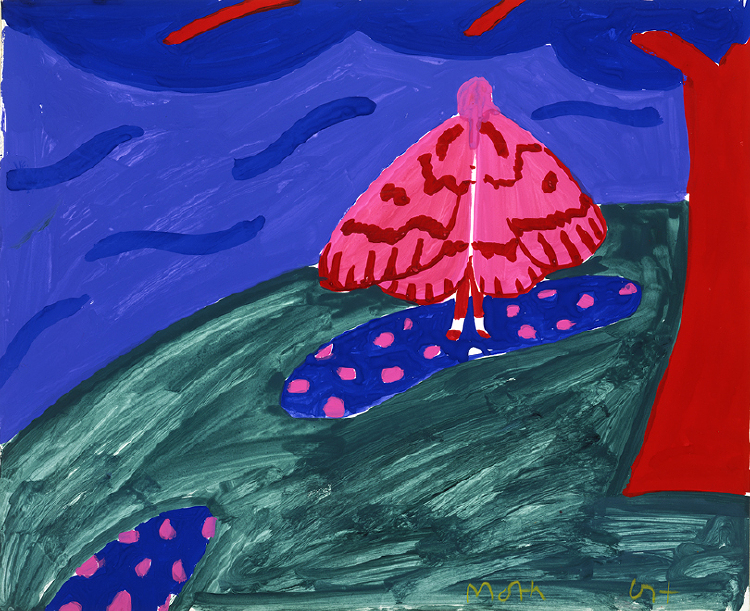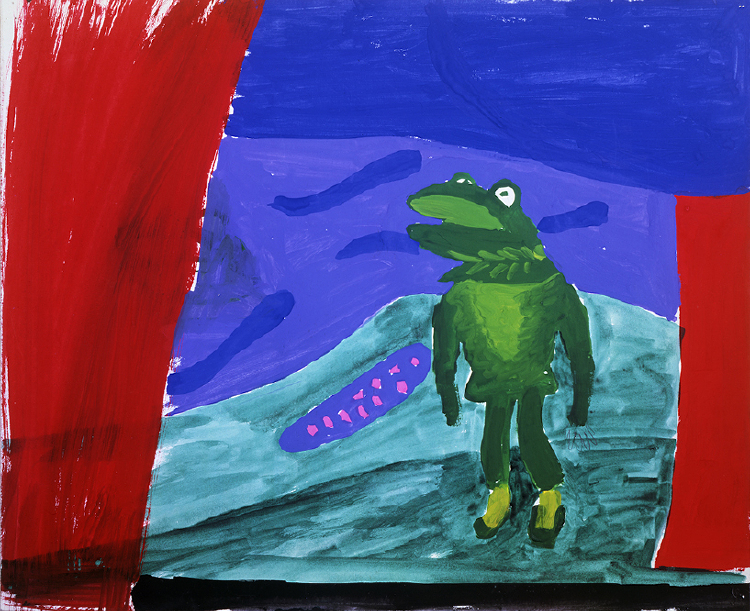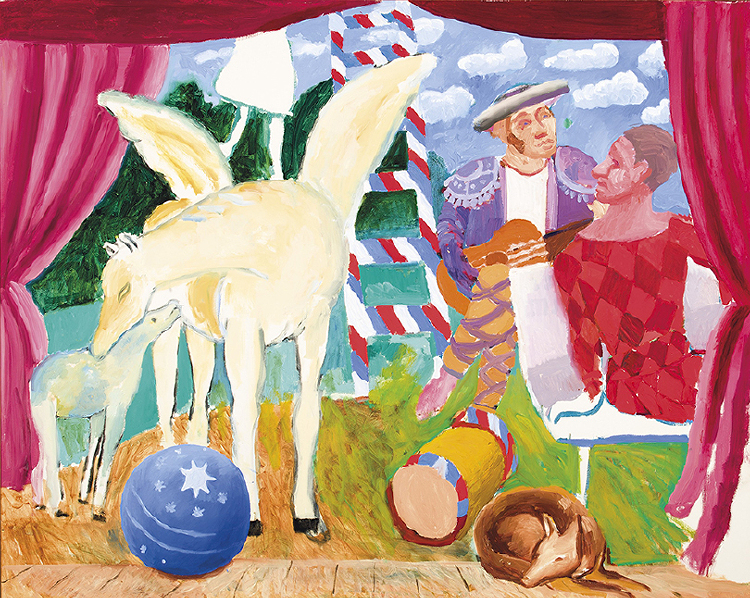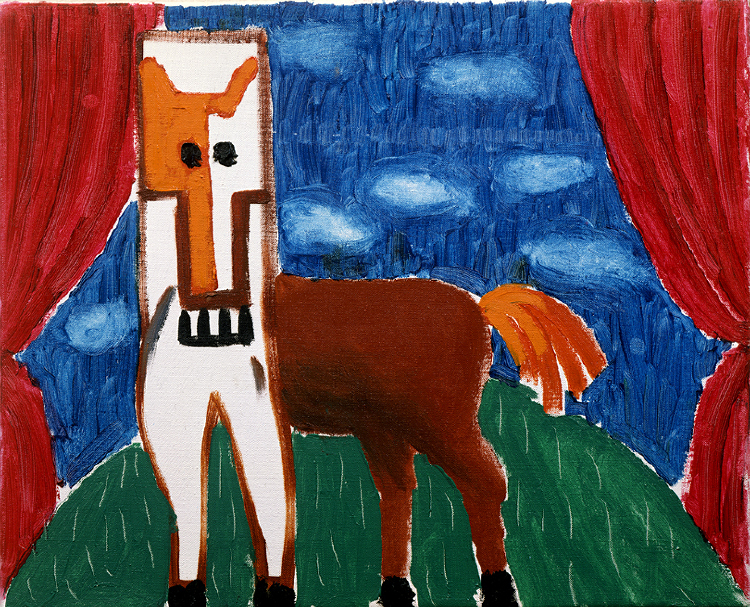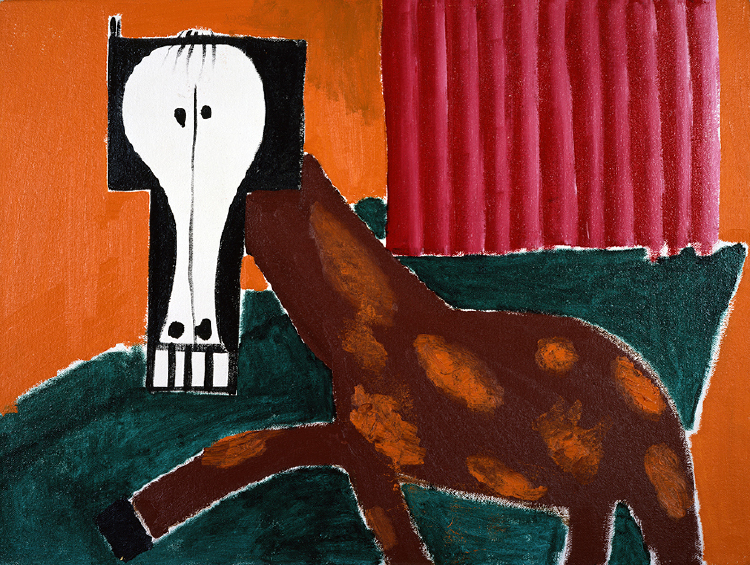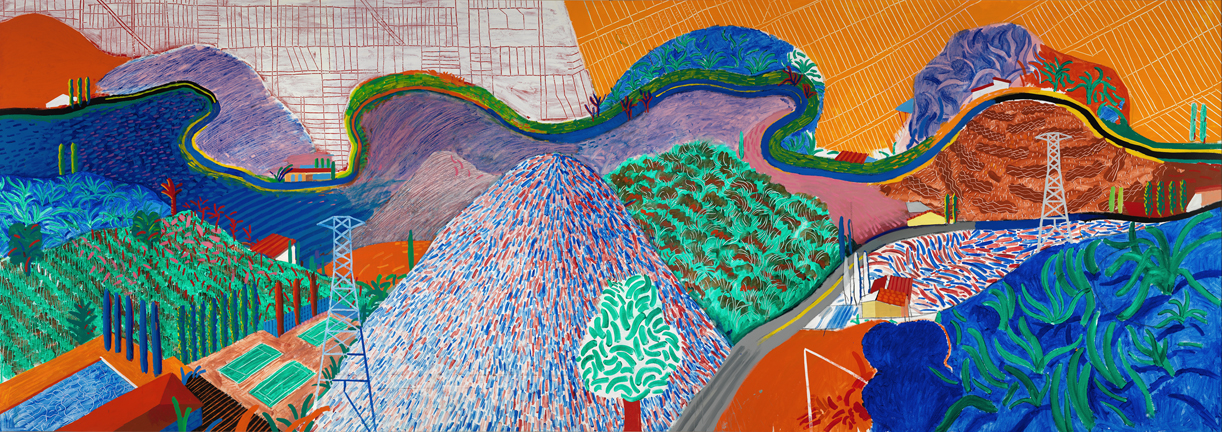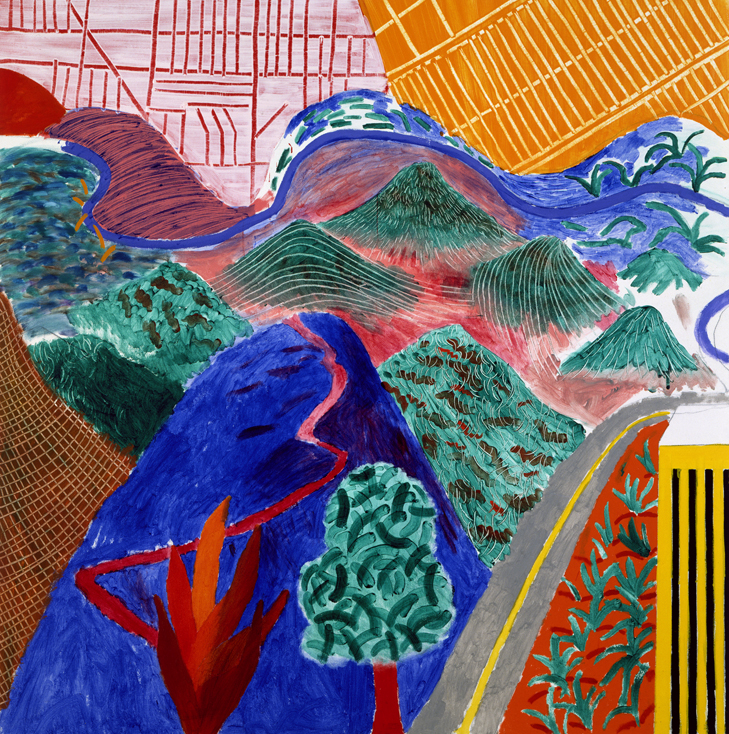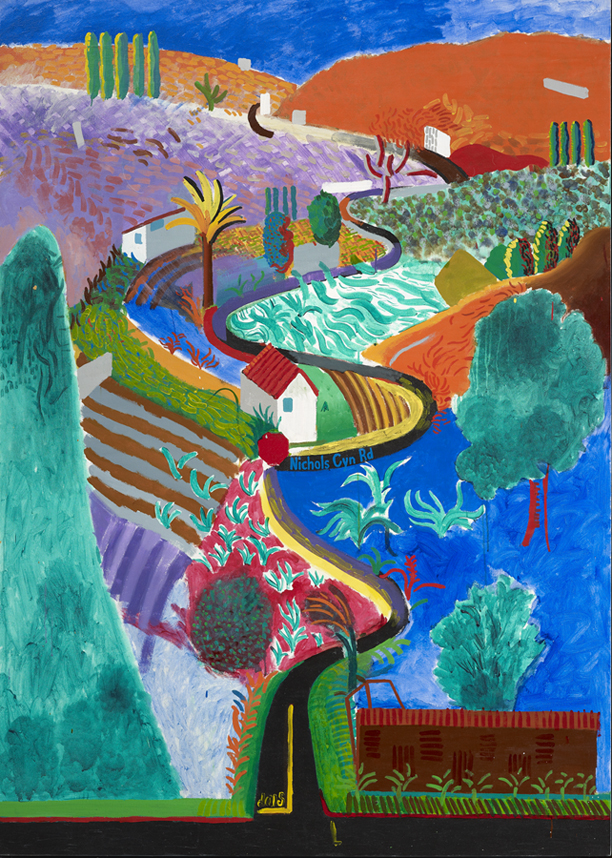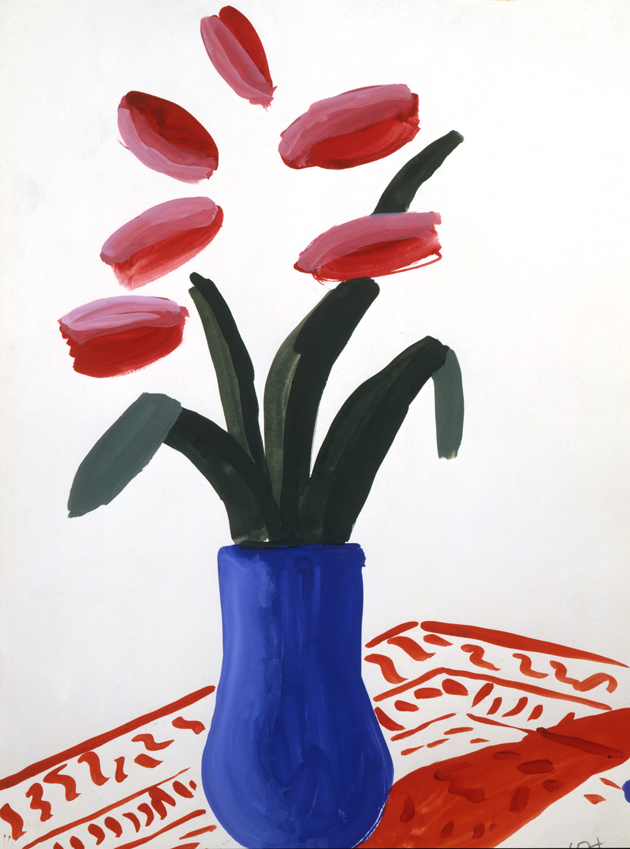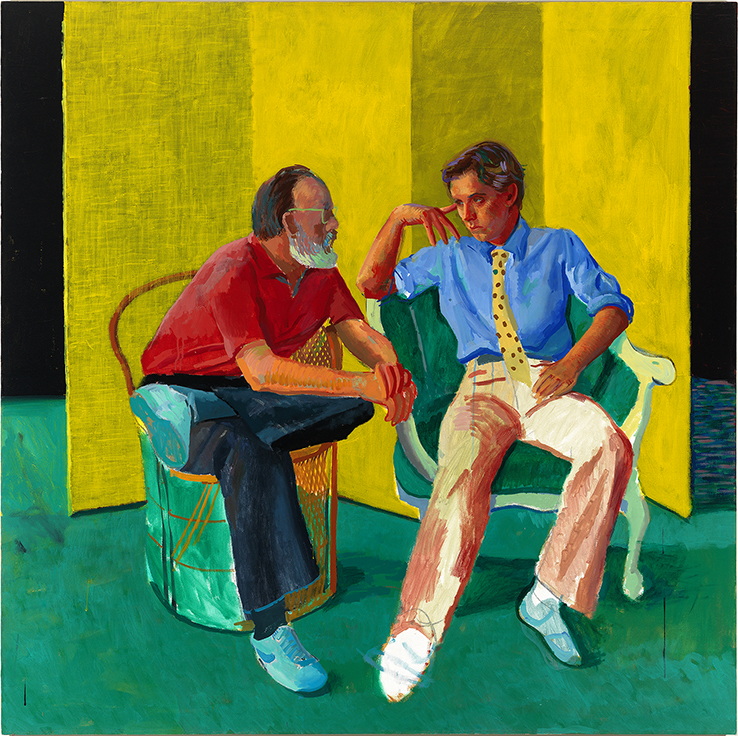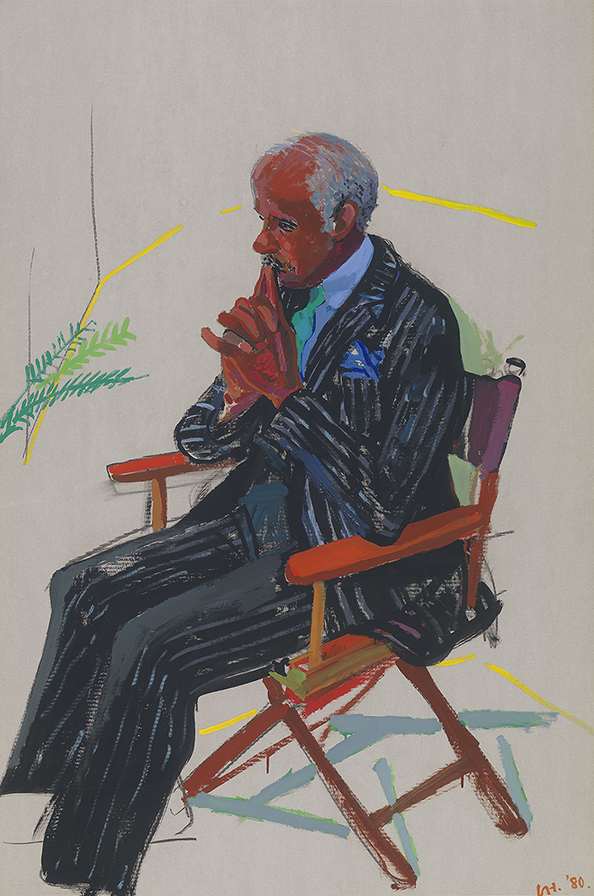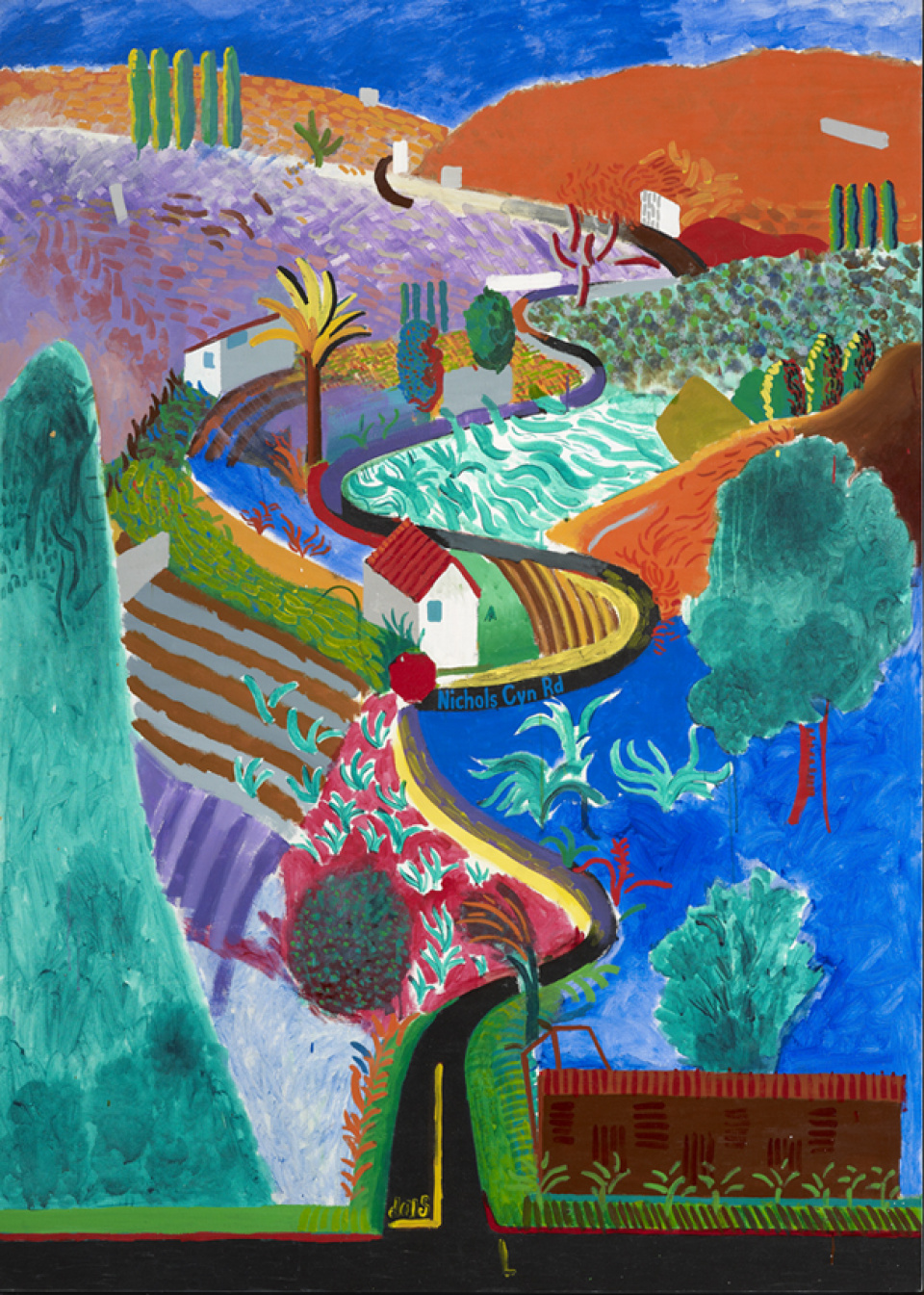
Parade triple bill
For the Metropolitan Opera in New York, Hockney is at work on an upcoming triple bill of Eric Satie’s ballet Parade and two short operas, Francis Poulenc’s Les mamelles de Tirésias and Maurice Ravel’s L’enfant et les sortilèges. He is [NESTED]invited by director John Dexter to design the production; the project also brings into his orbit the young design assistant Ian Falconer.
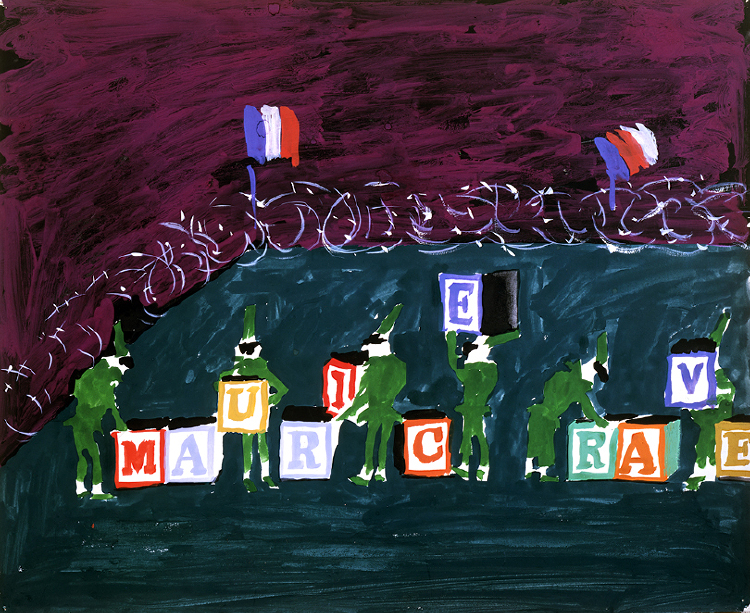
Parade
Les mamelles de Tirésias
L’enfant et les sortilèges
Picasso, music, and dance
Hockney sees two major Picasso exhibitions: a retrospective at the Museum of Modern Art in New York and Picasso from the Musée Picasso at the Walker Art Center in Minneapolis. Impressed by the immediacy of the paintings and Picasso’s prolific production—“It’s like the National Gallery [NESTED]all painted by one man .... No artist ever left such incredible evidence of his experience before; it’s like Rembrandt, Piero, Van Gogh, and Degas all in one”—Hockney once more takes Picasso’s model to heart, rapidly producing numerous canvases representing music and dance.
I still had things to do for Parade, but the exhibition affected me so much I thought, God, if you want to paint, just paint. I thought, if Picasso was here, what he would do would be to make paintings of the sets instead of doing them as gouache—so that’s what I did.
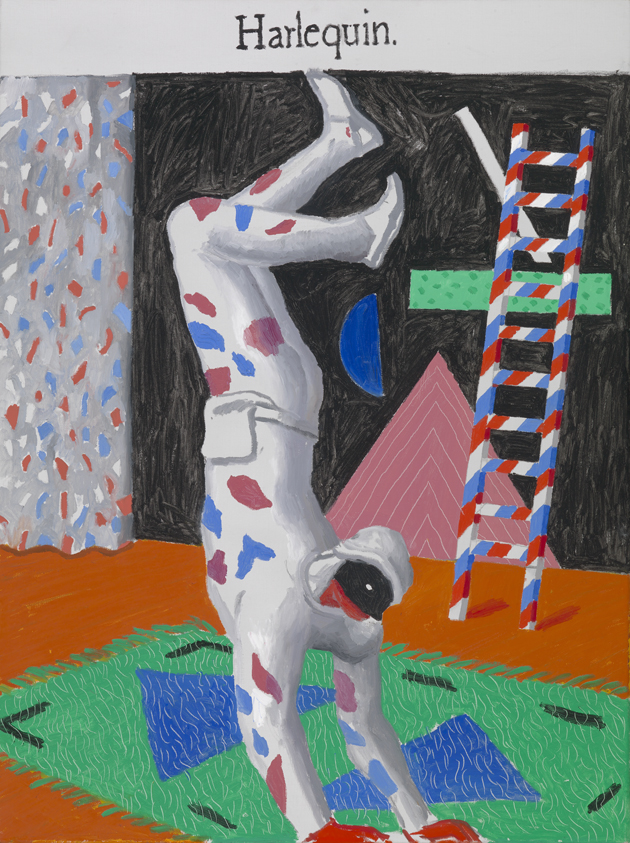
Different views of L.A.
In the autumn, back in L.A., Hockney is challenging himself to approach landscape painting afresh through L.A.’s urban-yet-wild setting, as experienced by car, the [NESTED]quintessential means of locomotion in the city. He sets out to represent the journey required to descend from the high perch of his house in the Hollywood Hills to his studio, and completes two grand paintings: Nichols Canyon and Mulholland Drive: The Road to the Studio. The latter is his largest painting on a single canvas.
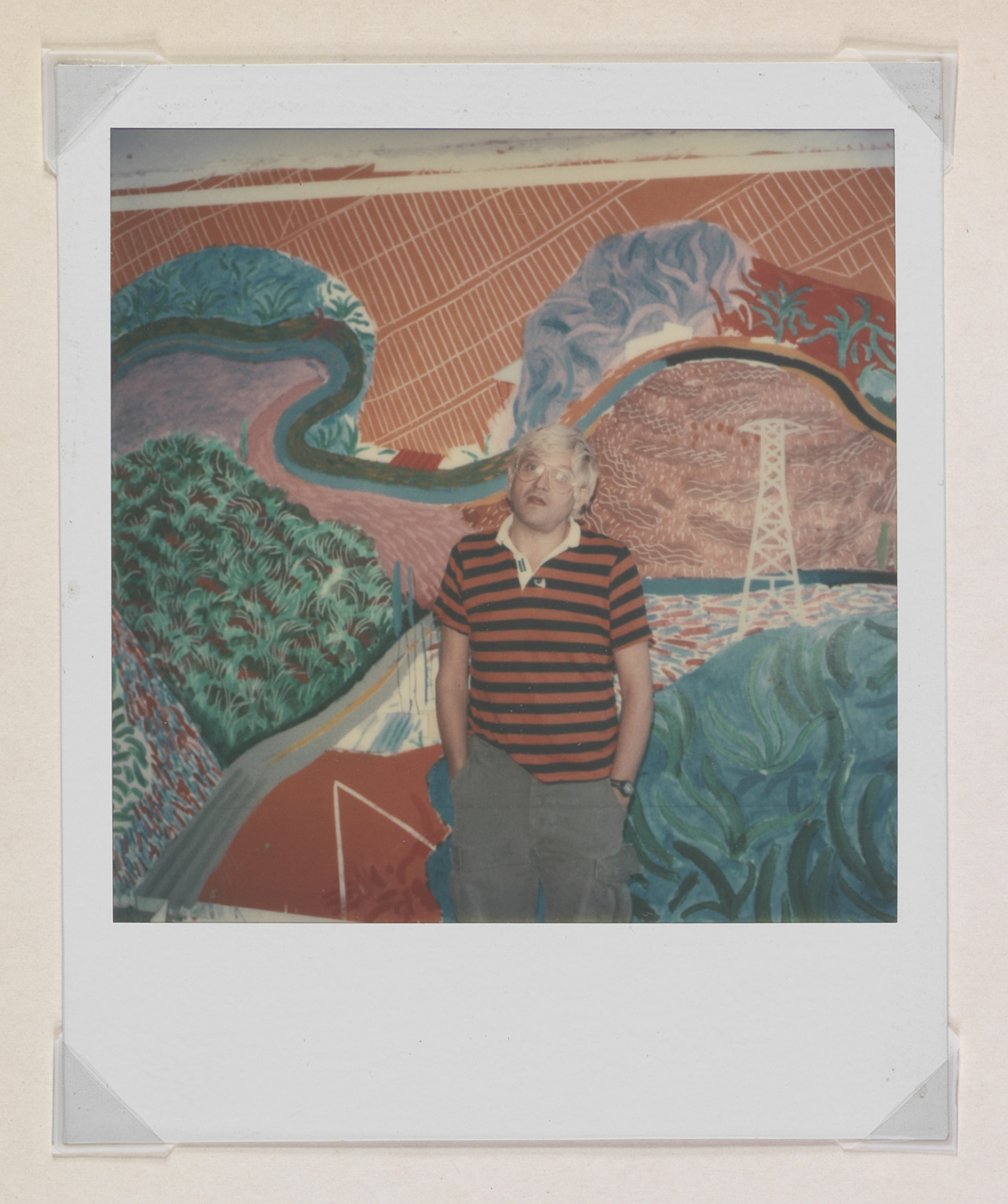
You drive around the painting, Mulholland Drive: The Road to the Studio, or your eye does, and the speed it goes at is about the speed of the car going along the road. That’s the way you experience it.
The moment you live up here, you get a different view of Los Angeles. First of all these wiggly lines seem to enter your life, and they entered the paintings. I began Nichols Canyon. I took a large canvas and drew a wiggly line down the middle which is what the roads seem to be. I was living up the hills and painting in my studio down the hills, so I was traveling back and forth every day, often two, three, four times a day. I actually felt those wiggly lines.

Exhibitions
Solo
- Drawings, André Emmerich Gallery, New York, NY, USA (Apr 3–26).
- Lithographs 1978–1980, Tyler Graphics, New York, NY, USA (Jun 1980); catalogue.
- Travels with Pen, Pencil and Ink, Tate Gallery, London, UK (Jul 2–Aug 25); catalogue.
- David Hockney, André Emmerich Gallery, New York, NY, USA (Oct 4–22).
- David Hockney, Knoedler/Kasmin Gallery, London, UK (opens Oct 7, 1980).
- Twenty-Two Lithographs: Pools, Palm Trees, Portraits and Flowers 1978–1980, L.A. Louver, Venice, CA, USA (Nov 19, 1980–Jan 6, 1981).
Group
- Contemporary Printed Art: A View of Two Decades, Museum of Modern Art, New York, NY, USA (Feb 14–Apr 1); catalogue.
- Summer Exhibition Part II, L.A. Louver, Venice, CA, USA (Aug 19–Sep 13).
Publications
Publications
- David Hockney: 23 Lithographs 1978-1980, Tyler Graphics Ltd., Bedford Village, NY: Tyler Graphics Ltd..
- Paper Pools, by David Hockney, London: Thames & Hudson.
